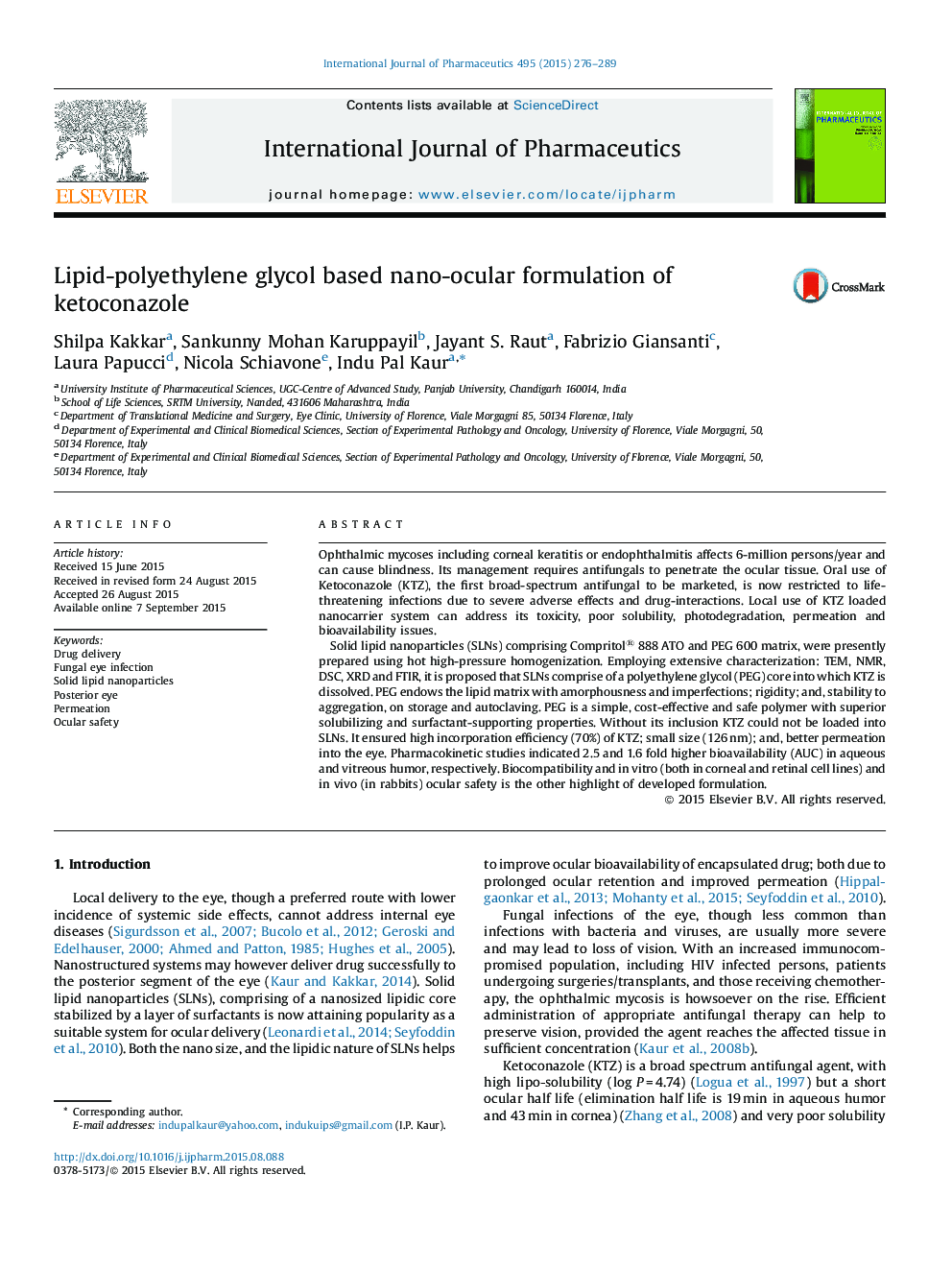| کد مقاله | کد نشریه | سال انتشار | مقاله انگلیسی | نسخه تمام متن |
|---|---|---|---|---|
| 5818461 | 1557328 | 2015 | 14 صفحه PDF | دانلود رایگان |
- Solid lipid nanoparticles (SLNs) of ketoconazole (KTZ) comprising biocompatible constituents such as Compritol® 888 ATO, Tween 80, PEG 600 and Phospholipon 90G, were developed and extensively characterized to understand their composition and stability.
- Nearly 70% of the drug was entrapped in the SLNs probably in the PEG core (as confirmed by FTIR and NMR studies).
- Enhanced ocular bioavailability and better antifungal efficacy was observed for KTZ-SLNs in comparison to the corresponding free drug suspension.
- Developed KTZ-SLNs were found to be safe for ocular use in terms of pH, osmolarity, refractive index, in vitro cytotoxicity studies and in vivo safety studies.
Ophthalmic mycoses including corneal keratitis or endophthalmitis affects 6-million persons/year and can cause blindness. Its management requires antifungals to penetrate the ocular tissue. Oral use of Ketoconazole (KTZ), the first broad-spectrum antifungal to be marketed, is now restricted to life-threatening infections due to severe adverse effects and drug-interactions. Local use of KTZ loaded nanocarrier system can address its toxicity, poor solubility, photodegradation, permeation and bioavailability issues.Solid lipid nanoparticles (SLNs) comprising Compritol® 888 ATO and PEG 600 matrix, were presently prepared using hot high-pressure homogenization. Employing extensive characterization: TEM, NMR, DSC, XRD and FTIR, it is proposed that SLNs comprise of a polyethylene glycol (PEG) core into which KTZ is dissolved. PEG endows the lipid matrix with amorphousness and imperfections; rigidity; and, stability to aggregation, on storage and autoclaving. PEG is a simple, cost-effective and safe polymer with superior solubilizing and surfactant-supporting properties. Without its inclusion KTZ could not be loaded into SLNs. It ensured high incorporation efficiency (70%) of KTZ; small size (126Â nm); and, better permeation into the eye. Pharmacokinetic studies indicated 2.5 and 1.6 fold higher bioavailability (AUC) in aqueous and vitreous humor, respectively. Biocompatibility and in vitro (both in corneal and retinal cell lines) and in vivo (in rabbits) ocular safety is the other highlight of developed formulation.
195
Journal: International Journal of Pharmaceutics - Volume 495, Issue 1, 10 November 2015, Pages 276-289
